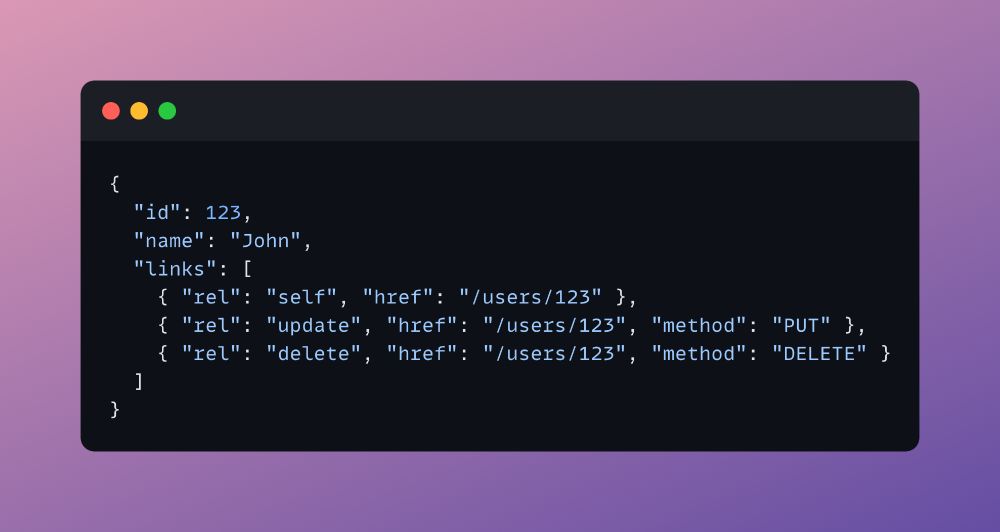
REST Tip – Use HATEOAS to guide the client
HATEOAS = Hypermedia as the Engine of Application State
📦 Instead of sending just data, include actions
🧠 Why?
• Makes APIs discoverable
• Reduces hard-coded logic on the client
• Enables better versioning and evolution
09.04.2025 10:21 — 👍 2 🔁 0 💬 0 📌 0
Each class type serves a purpose.
Use them wisely to keep your codebase clean, maintainable, and SOLID.
#CSharp #DevCommunity #CleanCode
08.04.2025 19:14 — 👍 1 🔁 0 💬 0 📌 0
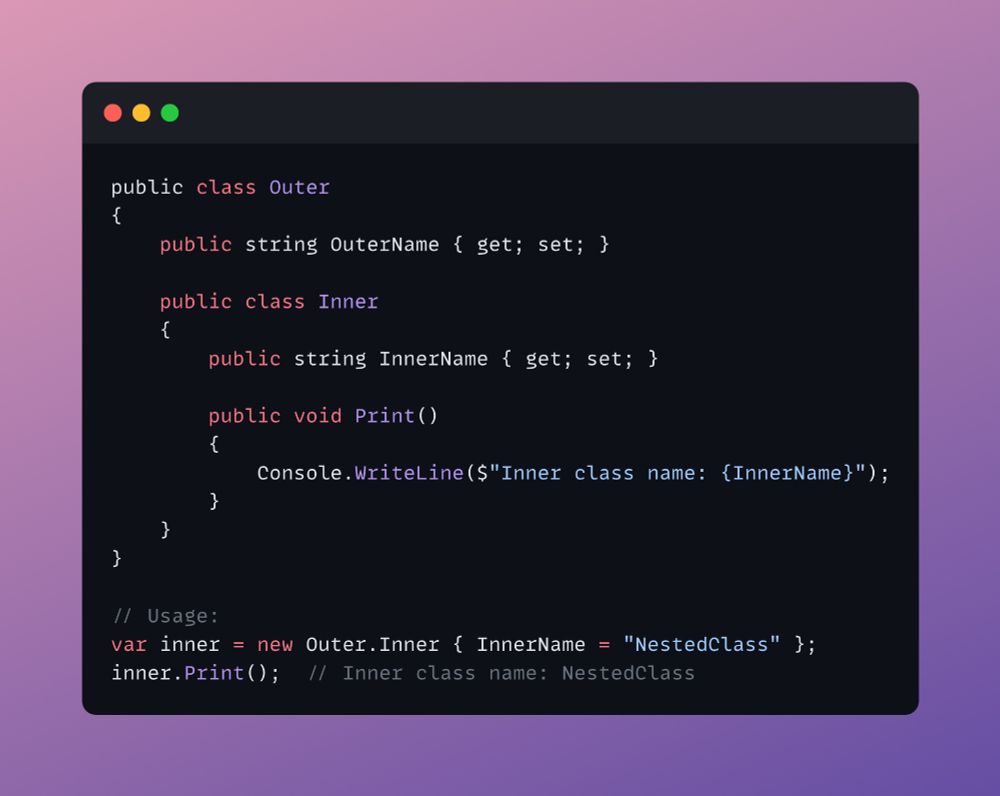
6. Nested Classes
Class inside another class.
Can be used for tight coupling (e.g., helper classes for outer class).
08.04.2025 19:14 — 👍 0 🔁 0 💬 1 📌 0
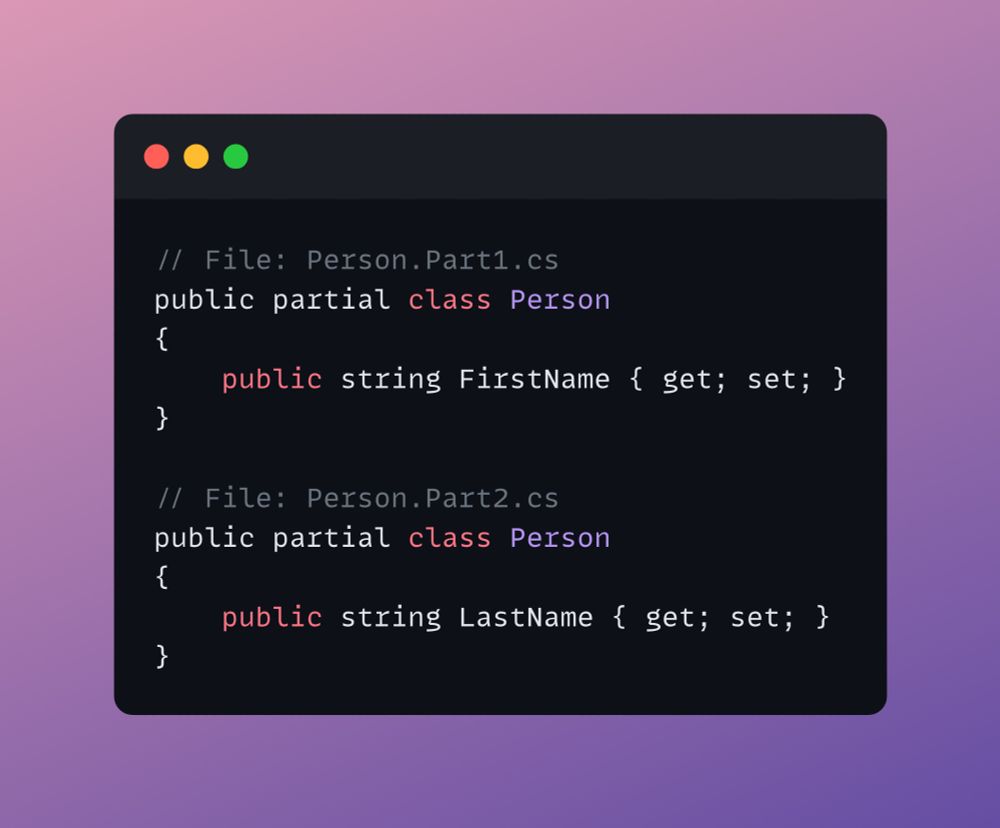
5. Partial Classes
Split one class across multiple files.
Great for large codebases or designer-generated code.
08.04.2025 19:14 — 👍 0 🔁 0 💬 1 📌 0
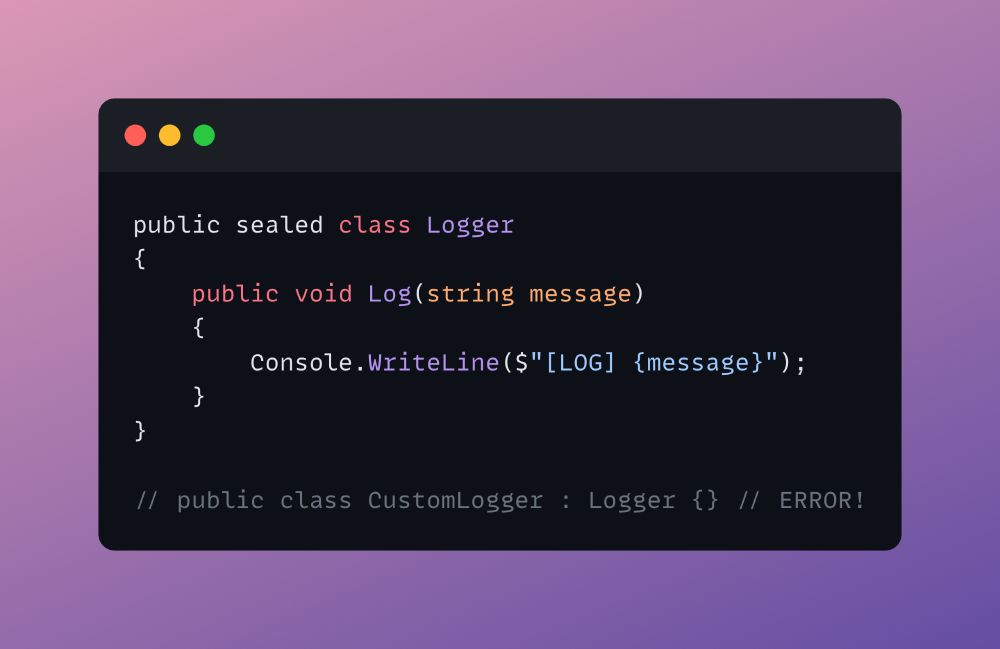
4. Sealed Classes
Can’t be inherited.
Used when you want to restrict extension.
08.04.2025 19:14 — 👍 0 🔁 0 💬 1 📌 0
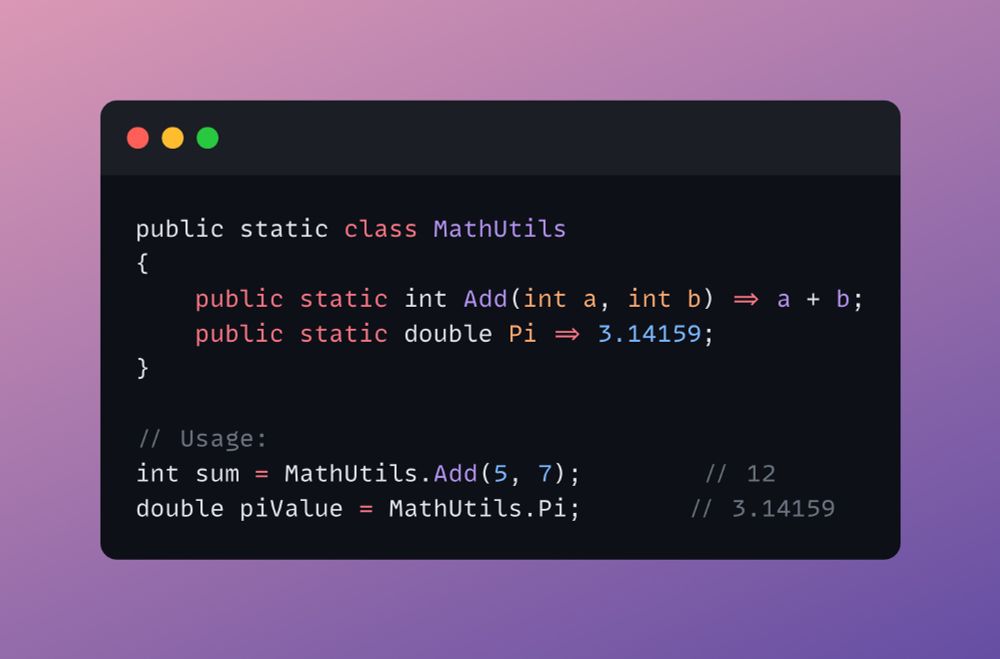
3. Static Classes
Only contains static members. Can’t be instantiated or inherited.
Perfect for utility/helper methods.
08.04.2025 19:14 — 👍 0 🔁 0 💬 1 📌 0

2. Abstract Classes
Use abstract when the class is meant to be inherited, not instantiated.
It can have both abstract (unimplemented) and concrete (implemented) methods.
08.04.2025 19:14 — 👍 0 🔁 0 💬 1 📌 0
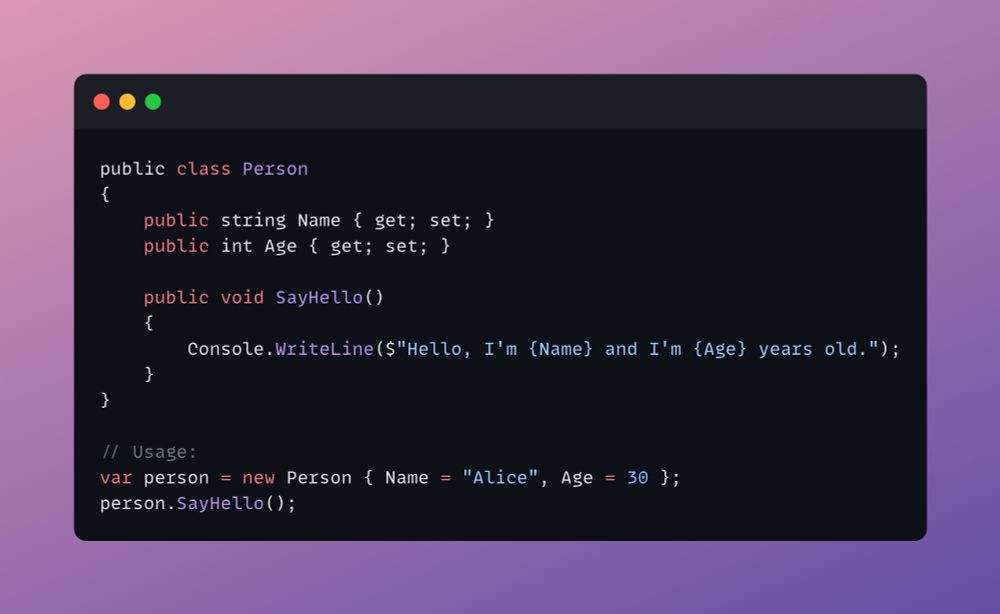
1. Regular Classes
The most common type: public class MyClass { }
Supports inheritance, encapsulation, constructors, methods, fields.
Can be instantiated with new.
08.04.2025 19:14 — 👍 0 🔁 0 💬 1 📌 0
Let’s talk about C# class types — a solid foundation for OOP in .NET.
You’ll find more than just “class” in C#. Let’s dive into the types you can define and use.
08.04.2025 19:14 — 👍 3 🔁 1 💬 2 📌 0
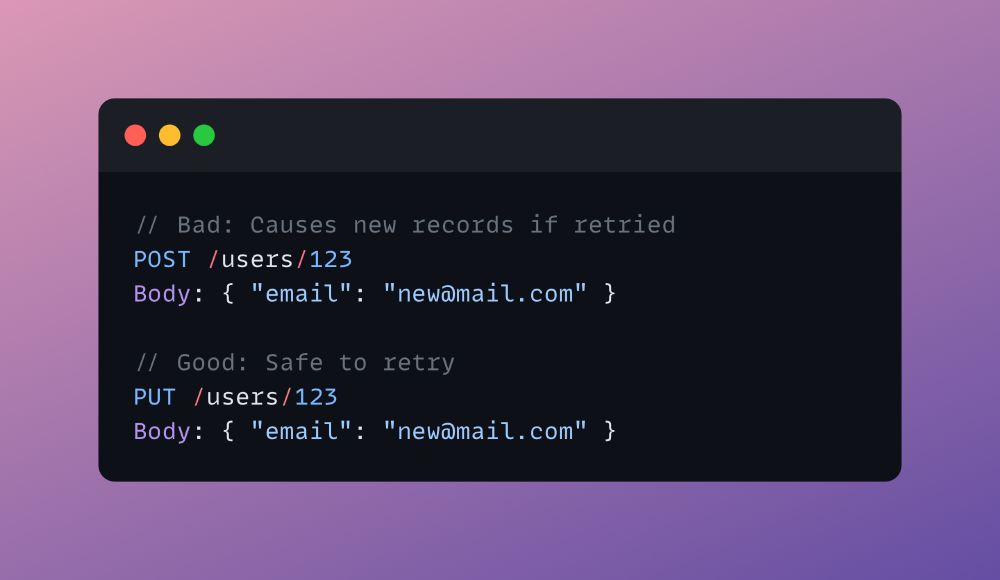
HTTP Tip
Idempotent methods can be safely retried without causing side effects.
🔹 GET, PUT, DELETE, HEAD, OPTIONS → Idempotent
🔹 POST → NOT idempotent
🧠 Why?
Using the correct method:
▪️ Makes APIs predictable
▪️ Enables retries in network failures
▪️ Helps with caching, monitoring, and debugging
08.04.2025 17:09 — 👍 1 🔁 0 💬 0 📌 0
🧠 Why?
• Scalar functions run row by row = performance bottleneck
• Use inline expressions, computed columns, or TVFs (table-valued functions) for better scalability
08.04.2025 13:04 — 👍 1 🔁 0 💬 0 📌 0
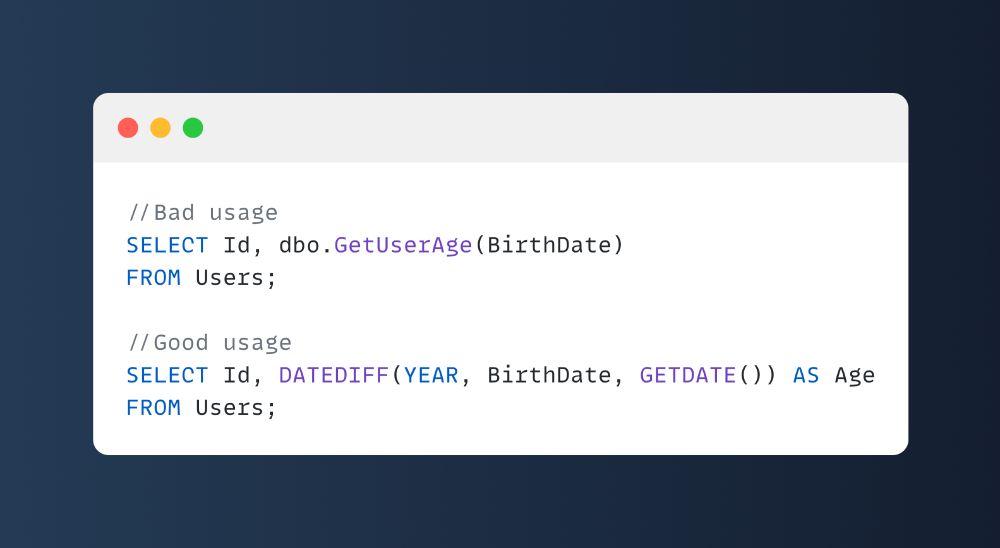
SQL Tip – Avoid Scalar Functions in SELECT for Performance
🚫 Bad (Scalar function kills performance on large data)
✅ Good (Inline logic or apply in WHERE/CTE for better performance)
Example:
08.04.2025 13:04 — 👍 1 🔁 0 💬 1 📌 0
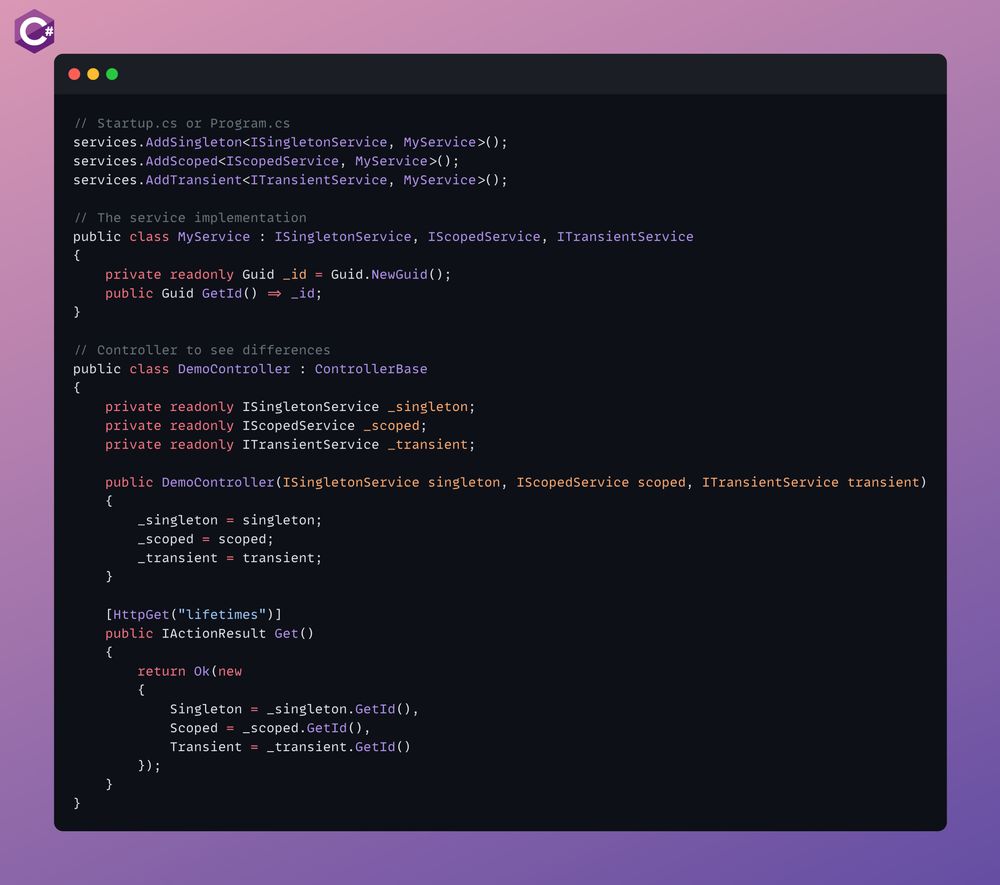
.NET DI Lifetime Tips:
🔹 Singleton - one of instance for entire app
🔹 Scoped - one instance per request
🔹 Transient - new instance every time
🚨 Be careful:
- Dont inject Scoped/Transient into Singleton (causes bugs/memory leaks)
- Use Singleton only for stateless or thread-safe services.
08.04.2025 12:13 — 👍 0 🔁 0 💬 0 📌 0

LINQ Tip:
Use ToList() after filtering, not before
Why?
🔹 First version loads everything into memory before filtering
🔹 Second version filters at source, better for DB or large collections
🔹 Especially important when using EF Core or APIs with IQueryable
08.04.2025 10:03 — 👍 1 🔁 0 💬 0 📌 0
🔹 Performance: Asynchronous iteration prevents thread blocking, keeping your app responsive.
🔹 Clean Code: No need for callbacks or complex state management like with traditional async operations.
08.04.2025 09:26 — 👍 0 🔁 0 💬 0 📌 0
🔹 await foreach: Asynchronously iterates over the items one by one, allowing for non-blocking execution while the data is being fetched.
Benefits:
🔹Memory Efficiency: Only one item is in memory at a time, so it’s ideal for processing large datasets or streams.
08.04.2025 09:26 — 👍 0 🔁 0 💬 1 📌 0
Explanation:
IAsyncEnumerable<T>: Enables you to stream data asynchronously without blocking threads.
🔹 Use yield return to return items one at a time.
🔹 Data is fetched lazily, so you only process what you need.
08.04.2025 09:26 — 👍 0 🔁 0 💬 1 📌 0
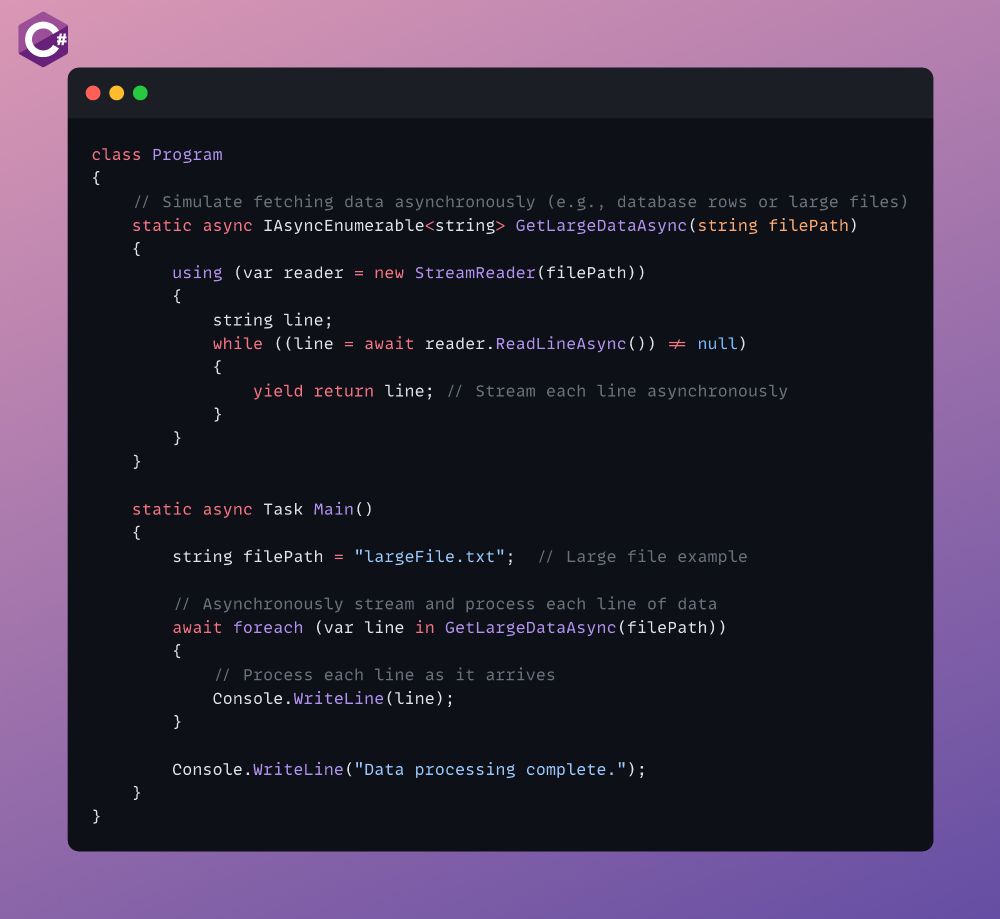
Efficient Async Data Streaming with IAsyncEnumerable<T>
Scenario:
You need to process a large dataset (e.g., database records, file lines, etc.), but you don’t want to load everything into memory at once. Using IAsyncEnumerable<T> lets you stream data asynchronously with minimal memory usage.
08.04.2025 09:26 — 👍 0 🔁 0 💬 1 📌 0
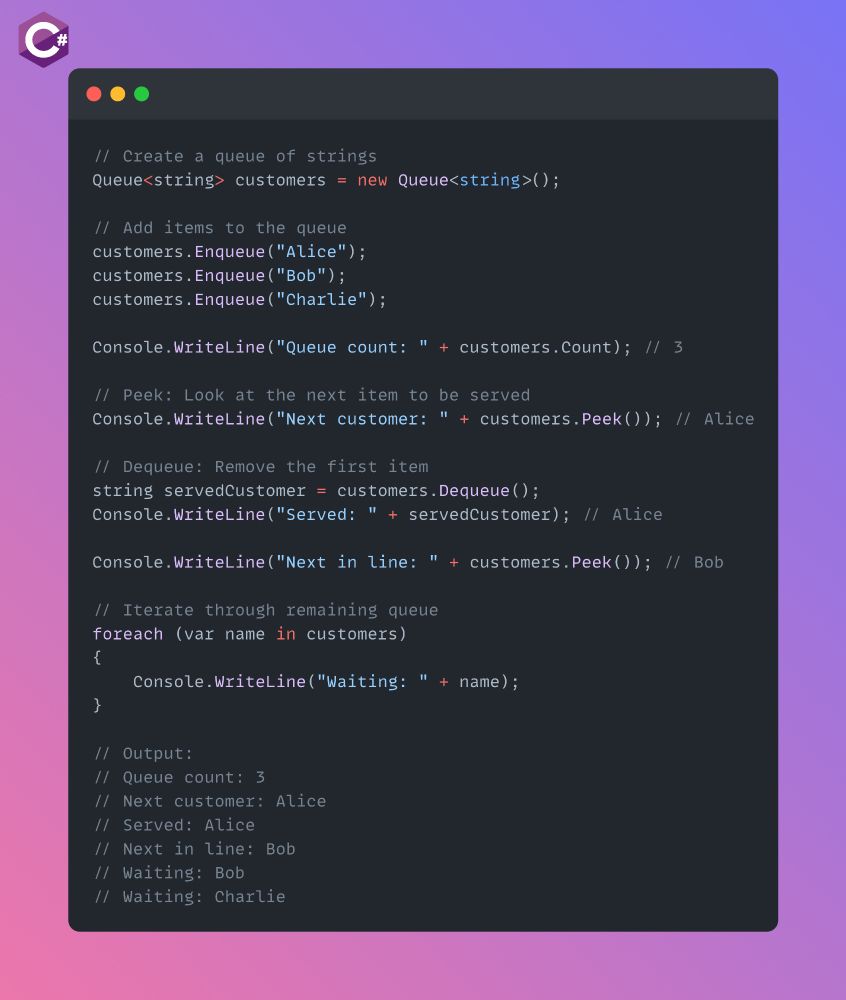
🔹 What is Queue<T>?
Queue<T> is a First-In-First-Out (FIFO) collection in C#.
It means the first item you add is the first one to be removed.
When to use?
- Task scheduling
- Print jobs
- Message handling
- Breadth-first search (BFS) in graphs
Example:
07.04.2025 19:51 — 👍 1 🔁 0 💬 0 📌 0
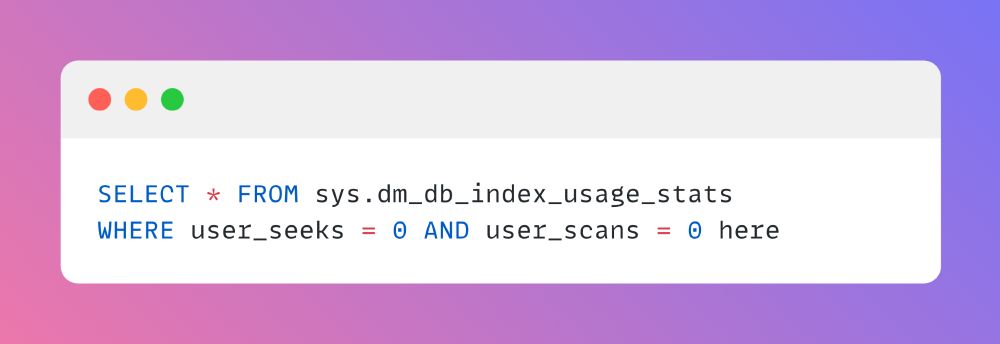
SQL Tip:
Always monitor and maintain your indexes.
Unused or duplicate indexes = slower writes and wasted space.
Why?
- Clean indexes = faster inserts/updates
- Less I/O, better performance
🔍 Use this to find unused indexes in SQL Server
07.04.2025 19:16 — 👍 1 🔁 0 💬 0 📌 0
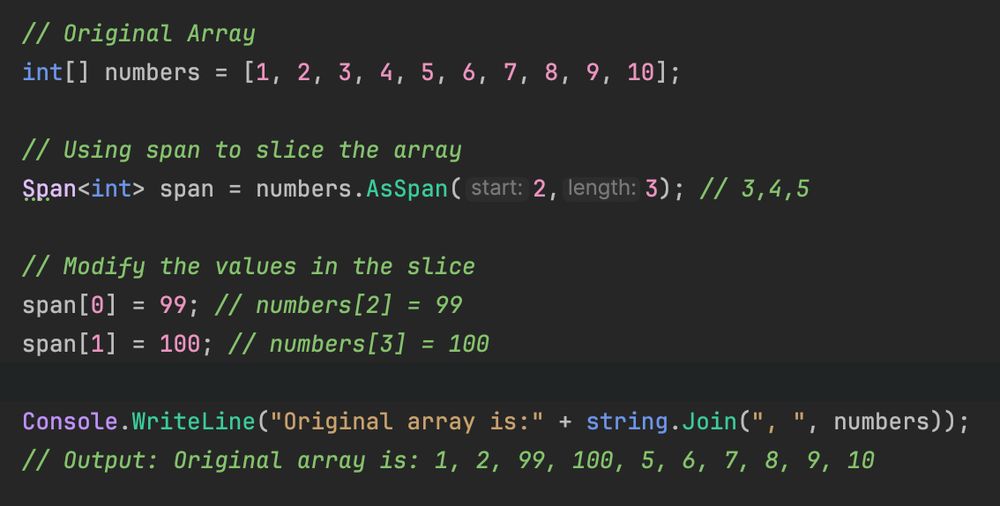
Csharp Tip:
Use Span<T> for high-performance, allocation-free array slicing. Avoid ToList() when you don’t need it!
Why?
🔹 Zero allocations
🔹 Lightning-fast memory access
🔹 Perfect for performance-critical code
#csharp #dotnet
07.04.2025 15:37 — 👍 4 🔁 0 💬 0 📌 0

LINQ Trip:
Use GroupJoin for efficient one-to-many relationships instead of nested loops.
Why?
🔹 Cleaner than SelectMany + Where
🔹 Ideal for creating master-detail structures in memory
07.04.2025 11:41 — 👍 0 🔁 0 💬 0 📌 0
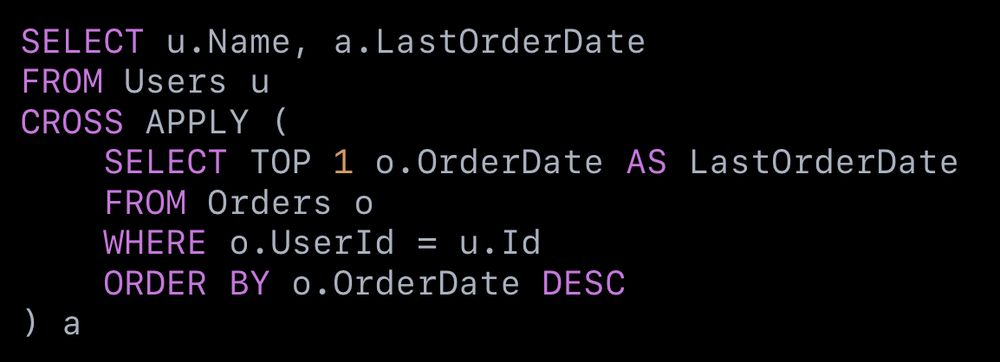
SQL Tip:
Use CROSS APPLY for row-wise calculations or to invoke table-valued functions per row.
Why?
🔹Powerful for row-by-row subqueries
🔹Cleaner & faster than correlated subqueries in many cases
07.04.2025 08:18 — 👍 0 🔁 0 💬 0 📌 0

Csharp Tip:
Use async Task for methods so exceptions can be awaited and handled properly.
Pro tip: Use async void only for UI event handlers.
06.04.2025 22:34 — 👍 0 🔁 0 💬 0 📌 0

Pass by Value vs Pass by Reference
🔹 Pass by Value: A copy of the value is passed to the function. Changes inside the function don’t affect the original variable.
🔹 Pass by Reference: The memory address (reference) is passed. Changes inside the function do affect the original variable.
06.04.2025 20:23 — 👍 1 🔁 0 💬 0 📌 0

SQL Tip:
Use EXISTS instead of COUNT(*) > 0 for better performance when checking if rows exist.
✅ EXISTS stops at the first match.
❌ COUNT(*) scans the whole table.
Faster checks = faster queries ⚡
06.04.2025 12:48 — 👍 4 🔁 1 💬 0 📌 0
How does it work?
Instead of sending 1 SQL query per entity (slow), BulkUpdate:
✅ Builds a temporary SQL table
✅ Pushes all data into it in one batch
✅ Runs a single efficient UPDATE JOIN on the real table
✅ Drops the temp table after update
Result: Thousands of updates in milliseconds ⚡
06.04.2025 12:37 — 👍 0 🔁 0 💬 0 📌 0
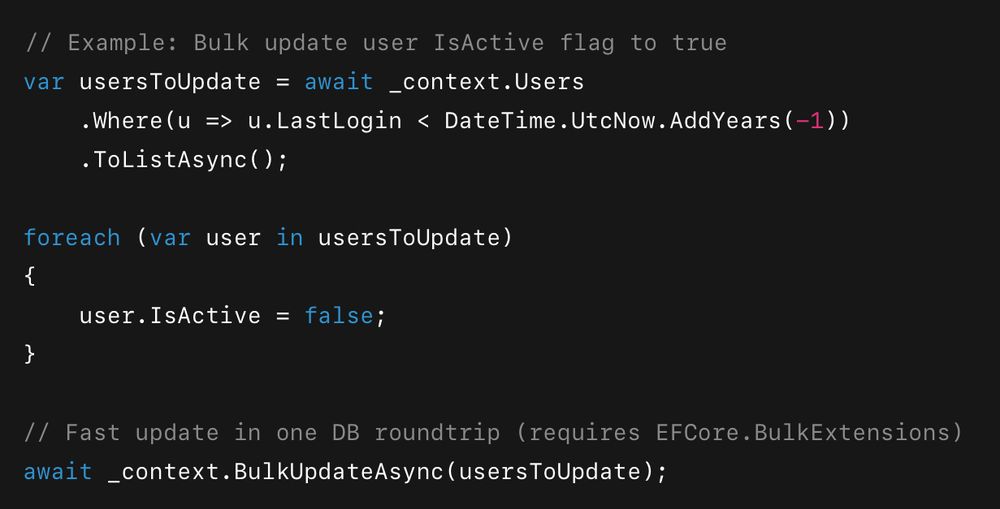
EF Core Tip – Bulk Update:
Need to update thousands of rows? Avoid looping with .SaveChanges() in EF Core — it's slow.
Use a bulk update library like EFCore.BulkExtensions for massive performance gains.
Bonus: Works for Insert, Delete, Merge too.
06.04.2025 12:33 — 👍 0 🔁 0 💬 1 📌 0

Csharp Tip:
Extract magic values into constants to improve readability and maintainability.
Cleaner code = easier maintenance!
06.04.2025 10:04 — 👍 1 🔁 0 💬 0 📌 0

C# Trick:
Use Dictionary for fast lookups instead of looping!
Instead of searching a list repeatedly, store key-value pairs in a dictionary for O(1) access.
05.04.2025 22:44 — 👍 0 🔁 0 💬 0 📌 0
Videogame Design Student at ESAT
- https://linktr.ee/Phantomarrow
Currently working on: @insidethecrowsnest.bsky.social
Contact me via:
- Mail: phantomarrowgd@gmail.com
Software Engineer 👨💻 | Microsoft MVP 🇨🇭 | Floorball player 🥅 | Father of two 👦
https://blog.rufer.be/
#devops #devsecops #appsecurity #webdev #azure #dotnet
Azure MVP, software engineer, software architect, blogger and speaker loving all things serverless C# and Azure. Certified Azure Solutions Architect.
software professional • artisan bogan • os agnostic • webassembly • c++ • c# • x86 • python • langchain • semantic kernel • leadership • quality • bants & yarns
Lead Consultant @Devoteam | #Azure, #AzureLocal, #AzureVirtualDesktop, #Windows365 & #Intune | Blog: https://schmitt-nieto.com
Principal engineer at JetBrains, passionate about .NET, performance, and debugging. Microsoft MVP. Co-author of Pro .NET Memory Management (2nd edition)
Software Engineer, Speaker, Microsoft MVP, Carnatic Music Vocal Student
Father, Husband, Dotnet C# Software Development, Atheist / Humanist, Progressive, Vegetarian, Nerd
What we think about, we bring about.
#WeAreDotnet is a community for people who create and enjoy #dotnet related content. This official account provides you with regular updates on our journey.
wearedotnet.io
#dotnet and #gis developer, creator of GeoBlazor open source library
🇹🇷🇨🇭🇵🇸 | Twinfather 👶🏻👶🏻 | Dogfather 🐶 | Catfather 🐱 | Husband | Softwareengineer 👨🏻💻
Follow for your daily dose of #humour #fails #wins #funny
https://hashiiiii.com/
SoftwareEngineer@DeNA / Unity / C# / Japanese
Microsoft MVP - BlazorHelpWebsite.com - BlazorData.net - AIStoryBuilders.com (He/Him) - #Blazor - 💙- #Resistance - #NoICE
lead in software development | semiconductors | podcaster | starting CrossFit | growth mindset | sharing is caring!
Build .NET Apps, share coding experiences, and memes. I work for Azure Tools team @ Microsoft. Check out my portfolio ➡ https://codewithsaar.com 😎 and my GitHub: https://github.com/xiaomi7732
Mobile app developer - Xamarin / MAUI - Swift & SwiftUI
Software Developer | AWS / Cloud | JVM / Node.js | IaC | Serverless | Kubernetes
🧑🏼💻Works @ The LEGO Group | Billund 🇩🇰
Www: https://moelholm.com
GitHub: http://github.com/moelholm
Strava: https://www.strava.com/athletes/nmlholm
World-class #ASPNETCore #Blazor http://Coding-Machine.NET converting #c0ffee ☕ to #c0de 👨💻 as #10Xer // all opinions are your own 😁 #PunksNotDead 🤘






















